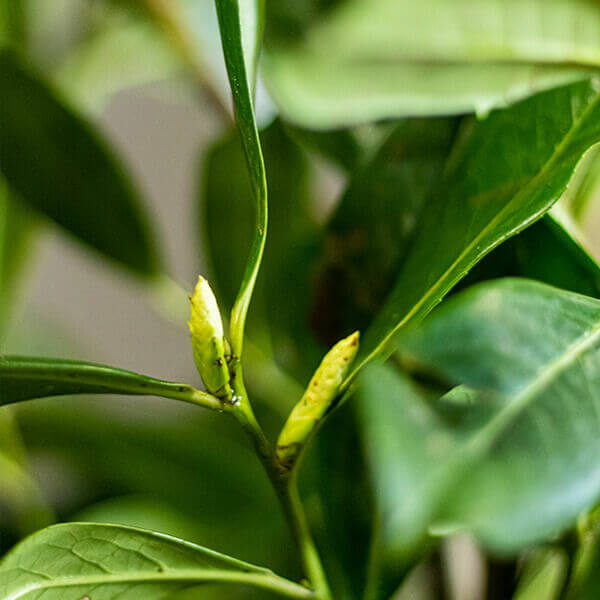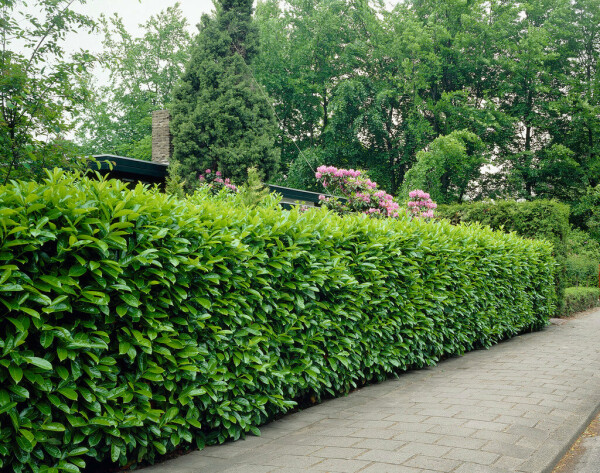Drought-tolerant Hedging Plants
Drought-tolerant Hedging Plants
Blog Article
Hedge Plants For Security And Privacy
Improve your garden's attraction with lavish hedge varieties such as Yew (Taxus), Thuja, Laurel, Photinia, and Bamboo, commemorated for their structural integrity and ecological benefits.
Yew and Thuja offer evergreen coverage and winter resilience, while Laurel provides fast growth and broad, aromatic leaves.
Photinia adds seasonal beauty with its vibrant red foliage, and Bamboo lends a low-maintenance, tranquil ambiance.
These hedges enhance air quality, decrease sound, and create tranquil, private areas.
Proper planting, spacing, and maintenance guarantee energetic development and environmental consistency.
Check out how these lavish varieties can elevate your garden's beauty and well-being.
Key Takeaways
Change Your Garden With Lush Hedge Ranges
- Select Yew for its dense, evergreen development and unparalleled longevity.
- Go with Laurel for its fast growth and broad leaves, guaranteeing fast personal privacy.
- Choose Photinia for its lively seasonal foliage, which turns a striking dark red.
- Make use of Bamboo for a low-maintenance, winter-hardy hedge with aesthetic appeal.
- Area plants 2-3 per meter and prune regularly for optimal growth and health.
Popular Hedge Plants
When transforming a garden with rich hedge varieties, it's important to consider popular hedge plants such as Yew, Thuja, Laurel, and Photinia due to their unique qualities and benefits.
Yew (Taxus) is highly respected for its longevity and dense, green growth, making it a prime choice for sustaining landscapes.
Thuja is noted for its evergreen foliage and robust winter season resilience.
Photinia includes seasonal vibrancy with red leaves that darken with time, developing vibrant visual appeal.
Laurel uses fast growth and aromatic, broad leaves, suitable for quick privacy.
Additionally, Bamboo is an exceptional option for ambiance, using a low-maintenance, winter-hardy alternative that boosts the garden's visual with its classy, swaying walking sticks.
These choices cater to a variety of horticultural needs and preferences.
Advantages of Garden Hedges
Garden hedges use a plethora of advantages, making them an important addition to any landscape. These natural barriers are cost-efficient to execute and offer considerable wind protection, boosting air blood circulation and contributing to noise decrease. The dense foliage of hedges like Thuja and Beech ensures privacy by obstructing visibility, developing a tranquil and secluded environment.
Hedges likewise play a vital role in microclimate policy, providing a steady environment that fosters plant growth and minimizes temperature level variations. Their elaborate leaf structures filter toxins, enhancing air quality and contributing to a much healthier garden ecosystem.
Additionally, hedges master noise reduction, taking in and deflecting acoustic waves to lower ambient noise levels. This double performance of providing both acoustic and visual privacy boosts the overall tranquility and visual appeal of any garden.
Planting and Maintenance Tips
For an effective hedge, careful preparation of the planting area is important. Ensure the soil has appropriate pH and drain to support strong root development.
Space the plants properly for the chosen types. Water the hedge regularly during its initial development phase, adjusting as required with seasonal modifications.
Execute a organized pest control and disease avoidance technique, utilizing natural or chemical treatments when essential. Regularly inspect for aphids, termites, and fungal infections.
Apply mulch to retain moisture and suppress weeds. Seasonal pruning promotes dense growth and air circulation, important for plant health.
Following these standards will assist you cultivate a vibrant, properly maintained hedge that boosts the beauty of your garden.
Spacing and Cutting Standards
Spacing and Cutting Guidelines
Proper spacing and trimming are crucial for cultivating healthy, visually appealing hedges. Adequate spacing ensures each plant receives adequate nutrients, light, and air flow.
Follow these guidelines for optimal hedge maintenance:
- Spacing: Position hedge plants 2-3 plants per meter to encourage robust growth.
- Pruning Techniques: Regular pruning is necessary for maintaining desired hedge height and shape. Trim new growth in summer and cut down older wood during winter.
- Seasonal Care: Adjust cutting approaches and schedules according to seasonal requirements to make sure plant health.
- Hedge Height: Regularly display and cut to preserve the desired hedge height and attain consistent looks.
Adhering to these actions will ensure your hedge thrives, boosting both the appeal and performance of your garden.
Choosing the Right Hedge
Choosing the Right Hedge
Picking the suitable website hedge involves examining elements such as mature height, foliage density, and ecological durability. Successful hedge plant choice requires understanding each types' growth attributes and site-specific versatility.
For example, Yew (Taxus) uses outstanding durability and dense development, while Thuja is noteworthy for its winter season durability. In addition, considering upkeep requirements is essential; fast-growing types like Laurel or Privet demand regular cutting, whereas low-maintenance options like Bamboo or Ivy might be preferable for those looking for minimal maintenance.
Environmental elements such as soil type, light availability, and wetness conditions need to likewise direct the selection procedure. This careful technique ensures the selected hedges will grow, providing both aesthetic and practical benefits to the garden landscape.
Shipment and Planting Suggestions
To ensure your hedge plants thrive, they must be provided by specialized couriers and planted immediately upon arrival.
Follow these vital actions for successful planting:
- Soil Preparation: Enhance the soil with natural matter to enhance drainage and nutrient content.
- Planting Depth: Develop a trench twice the width and equal to the depth of the root ball.
- Watering Methods: Water completely after planting, keeping the soil consistently wet but not saturated.
- Mulching: Apply a layer of mulch to keep wetness and reduce weeds.
Customer Support and Service
Provided the important function of prompt support in horticultural pursuits, our consumer assistance group is available six days a week through telephone, email, and social media to use skilled advice and swiftly address any concerns. Their dedication to quick response times ensures customer complete satisfaction by dealing with queries connected to plant health, optimum planting methods, and maintenance schedules.

-----------------
6 days a week
Within 48 hours
This comprehensive support group, strengthened by an excellent 9.3/ 10 consumer ranking, highlights our dedication to boosting the gardening experience for each customer.
Regularly Asked Concerns
The Length Of Time Does It Consider Hedge Plants to Develop?
Hedge plants usually need one to 3 years to end up being totally developed, with the specific period differing by species and growing conditions.
Efficient care during this crucial period is vital for robust development. Consistent watering, alert weed control, and proper fertilizer application are critical in promoting strong root development.
For example, fast-growing types like Laurel might establish quicker, while slower-growing ranges such as Yew might take longer. Thorough maintenance accelerates the facility process, leading to dense and healthy hedges.
What Are the Best Hedge Plants for Personal Privacy?
The question of the very best hedge plants for personal privacy includes assessing evergreen and deciduous alternatives.
Evergreen hedges like Thuja, Laurel, and Cypress provide year-round protection, making sure continuous personal privacy.
In contrast, deciduous hedges such as Beech use seasonal privacy, shedding leaves in chillier months.
Secret upkeep ideas for privacy hedges include routine trimming, fertilizing in spring, and appropriate spacing-- typically 2 to 3 plants per meter.
Furthermore, constant watering and diligent weed removal are vital for promoting healthy, dense growth.
Can Hedge Plants Draw In Wildlife to My Garden?
Yes, hedge plants can draw in wildlife to your garden by providing necessary benefits like shelter, food, and nesting websites, consequently enhancing regional biodiversity. Yew, holly, and laurel are outstanding for bring in birds, while ivy supports a range of insects.
Nevertheless, it is essential to keep in mind that there are some disadvantages, such as increased upkeep to manage bugs and routine upkeep. Carefully picking and preserving hedge varieties can help stabilize these benefits and disadvantages, eventually fostering a sustainable and vibrant community in your garden.
Are There Any Blooming Hedge Plants Available?
Yes, there are flowering hedge plants offered that can boost the beauty of your garden.
For example, Elaeagnus, likewise called Olive Willow, produces fragrant white flowers in the fall, including a touch of elegance.
Photinia, another popular option, showcases dynamic red leaves that develop into an abundant green, developing a dynamic visual impact throughout the seasons.
To ensure these plants flourish, it's important to practice correct pruning techniques and seasonal maintenance, such as trimming brand-new development in the summer season and cutting back in the winter season.
These procedures will assist maintain the health and aesthetic appeal of your flowering hedges.
How Do I Prevent Insects in My Hedge Plants?
To avoid bugs in hedge plants, use natural insect control techniques and preserve appropriate hedge care. Present helpful pests like ladybugs, which victimize damaging bugs, to create a balanced ecosystem.
Regularly inspect your hedges for signs of infestation and quickly eliminate any afflicted parts to prevent the spread. Ensure the health of your hedges by applying balanced fertilizers and supplying appropriate water.
Make use of mulching to maintain soil wetness and appropriate spacing to decrease plant stress and promote robust growth. These practices collectively assist in lessening insect issues and maintaining a healthy hedge.
Conclusion
In essence, choosing the ideal hedge ranges such as Yew, Thuja, and Laurel can change any garden into a tranquil sanctuary. These plants supply year-round greenery, enhance visual appeal, and deal practical advantages like sound decrease and wind security.
Proper planting strategies, precise spacing, consistent watering, and seasonal cutting are crucial for optimal development.
Trusted shipment services and expert consumer assistance ensure a smooth experience from purchase to planting, making it simpler than ever to raise your outdoor area.
Garden hedges use a wide range of advantages, making them a valuable addition to any landscape. These natural barriers are cost-effective to carry out and offer significant wind defense, improving air blood circulation and contributing to noise decrease. The dense foliage of hedges like Thuja and Beech makes sure personal privacy by blocking presence, producing a remote and serene environment.

Pruning Strategies: Regular pruning is important for maintaining wanted hedge height and shape. Trim brand-new growth in summertime and cut back older wood during winter.
Report this page